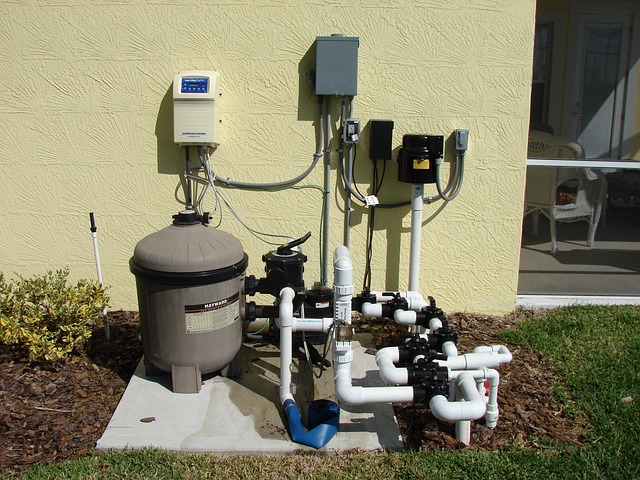A Complete Guide to Affordable Internet Providers in Canada
Finding reliable and affordable internet in Canada can feel like a daunting task, especially with so many providers and plans available. Whether you’re a student, a remote worker, or simply looking to cut costs, understanding your options is key to getting fast, dependable service without breaking the bank. This guide explores the top budget-friendly internet providers across Canada, helping you make an informed choice that fits both your needs and your wallet.

The internet has become an essential utility for Canadian households, supporting everything from remote work and education to entertainment and staying connected with loved ones. However, with the rising cost of living, finding affordable internet service has become increasingly important for many Canadians. This guide explores the landscape of budget-friendly internet options across Canada, helping you navigate the choices and make informed decisions that balance cost and quality.
Top Affordable Internet Providers in Canada
Canada’s internet market includes several providers that offer reasonably priced plans without compromising on essential service quality. TekSavvy stands out as a popular independent provider offering competitive rates across several provinces. Their plans typically start around $40-50 per month for basic broadband service. Distributel and VMedia also provide affordable options with various speed tiers to suit different needs and budgets.
In more urban areas, providers like Fido and Virgin Plus offer internet packages that frequently include promotional rates and bundle discounts. These providers leverage existing infrastructure from larger telecommunications companies while offering more competitive pricing. For those in areas with fiber optic infrastructure, Oxio has emerged as a transparent, no-frills provider with straightforward pricing.
Regional providers shouldn’t be overlooked when searching for affordable internet. Companies like SaskTel in Saskatchewan, Videotron in Quebec, and Eastlink in Atlantic Canada often provide locally competitive rates that may beat national providers in their service areas.
Factors to Consider When Choosing a Budget Internet Plan
Speed requirements should be your primary consideration when selecting an affordable plan. While higher speeds may seem appealing, many households can function well with 25-50 Mbps for basic streaming, browsing, and video calls. Only households with multiple heavy users or specific needs like gaming or 4K streaming typically require speeds of 100 Mbps or higher.
Data caps represent another crucial factor. Some budget plans limit monthly data usage, which can result in overage charges or throttled speeds. If you’re a heavy internet user who streams video content regularly or downloads large files, prioritizing unlimited data may be more economical in the long run despite a potentially higher monthly fee.
Contract terms vary significantly between providers. Some offer month-to-month service with no commitment but might charge higher equipment fees, while others require 1-2 year contracts in exchange for lower monthly rates or waived installation costs. Always calculate the total cost over the service period rather than focusing solely on the advertised monthly rate.
Connection type impacts both performance and price. DSL tends to be the most affordable but offers lower speeds, cable provides a good middle-ground for speed and price, while fiber offers the fastest speeds but typically at premium prices. Some providers also offer fixed wireless solutions in areas where wired infrastructure is limited.
Tips for Saving on Your Internet Bill
Bundling services can lead to substantial savings. Many providers offer discounts when you combine internet with mobile phone service, television packages, or home phone lines. However, only bundle services you’ll actually use—otherwise, you might end up paying more for unnecessary additions.
Negotiating with your provider can yield surprising results. Research competitive offers in your area before calling, and don’t hesitate to mention these alternatives. Many providers have retention departments specifically authorized to offer discounts to prevent customers from switching to competitors.
Watching for promotional offers can save you money, especially if you’re flexible about when you sign up. Many providers run back-to-school specials or holiday promotions that include significantly reduced rates for new customers, free installation, or equipment upgrades at no additional cost.
Consider purchasing your own equipment rather than renting from your provider. While modems and routers represent an upfront investment (typically $100-200), they often pay for themselves within a year compared to monthly rental fees that can range from $5-15 per month.
Comparison of Affordable Internet Providers in Canada
| Provider | Starting Price | Speed Range | Data Policy | Notable Features |
|---|---|---|---|---|
| TekSavvy | $39.95/month | 15-1000 Mbps | Mostly unlimited | No contracts, transparent pricing |
| Distributel | $39.95/month | 15-1000 Mbps | Unlimited | Free installation promotions |
| Oxio | $40/month | 15-500 Mbps | Unlimited | Simple pricing, no hidden fees |
| VMedia | $34.95/month | 15-1000 Mbps | Unlimited options | IPTV bundles available |
| CIK Telecom | $32.95/month | 15-1000 Mbps | Various caps | Multi-service discounts |
| Fido Internet | $45/month | 30-150 Mbps | Capped/unlimited | Mobile bundle discounts |
Prices, rates, or cost estimates mentioned in this article are based on the latest available information but may change over time. Independent research is advised before making financial decisions.
Understanding Internet Infrastructure in Canada
Canada’s vast geography presents unique challenges for internet infrastructure. Urban centers typically enjoy multiple provider options and infrastructure types, while rural areas may be limited to a single provider or rely on satellite internet. This disparity significantly impacts both availability and affordability.
The Canadian Radio-television and Telecommunications Commission (CRTC) has established programs to improve internet access and affordability across Canada. The Broadband Fund aims to expand infrastructure to underserved areas, while the Connecting Families initiative provides subsidized internet to eligible low-income households.
Third-party internet service providers (TPISPs) like TekSavvy, Distributel, and others lease infrastructure from major telecommunications companies at wholesale rates. This arrangement, mandated by the CRTC, creates more competition in the market and typically results in more affordable options for consumers, though service availability varies by region.
For Canadians in remote areas where traditional providers are unavailable or prohibitively expensive, emerging technologies like Starlink satellite internet or fixed wireless solutions from regional providers may offer alternatives, though these options typically come at premium prices compared to urban services.
Finding the right balance between affordability and quality requires understanding your household’s actual needs, researching available options in your specific location, and being willing to negotiate or switch providers when necessary. By taking these steps, Canadians can secure reliable internet service without unnecessary financial strain.




